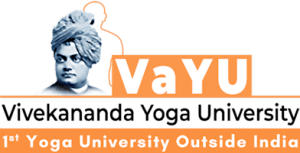Healing Hearts: The Role of Yoga in Prevention Reversal of Coronary Artery Disease
Did you know our hearts have an age too? Your heart age depends on the health of your heart and blood vessels. Neglecting your heart can lead to serious issues, one of them is coronary artery disease. Coronary artery disease, also known as coronary heart disease and ischemic heart disease, is a leading cause of death, manifesting as chest pain during physical exertion or emotional stress. It’s particularly shocking when seemingly healthy individuals, especially busy professionals, suffer sudden heart attacks. This condition has surged over the past fifty years, with scientists attributing it largely to modern lifestyle factors. While plagues and cholera (communicable diseases) were the major threats of the past century, heart disease and cancer (non-communicable diseases) now dominate as the primary killers, with heart attacks being the second most common cause of death globally, just behind accidents.
Heart disease is driven by several key risk factors, with stress being a major contributor. Stress can lead to smoking, obesity, hypertension, and poor cholesterol levels—all of which strain the heart. Additionally, diabetes accelerates artery damage, while a sedentary lifestyle worsens these issues. Addressing these factors is essential for heart health, where the yoga efficacy speaks volumes.
To understand heart disease, it's crucial to grasp how the heart functions and what happens in the arteries affected by the condition. The heart, a muscular pump, relies on the coronary arteries—right coronary, left coronary, and circumflex coronary—to supply itself with oxygen-rich blood. These arteries must continuously deliver sufficient oxygen to keep the heart's muscle functioning effectively, particularly during increased demand from exercise or emotional stress. Healthy coronary arteries can expand to meet these demands, maintaining balance and heart health. However, with coronary artery disease, these arteries become narrowed and less able to supply the necessary blood, leading to chest pain as the heart struggles to get enough oxygen. This narrowing is primarily due to atherosclerosis, a gradual aging process where fatty streaks and fibrous tissues build up in the artery walls. Starting in youth and progressing with age, these deposits can lead to significant blockages, particularly affecting vital organs like the heart and brain. This slow process ultimately results in conditions such as coronary artery disease, reflecting a broader problem of reduced blood supply in critical areas of the body.

“Awareness is a first step in Healing.”- Dr Dean Ornish. Yoga as a therapy directly works on the awareness of mind, body and breath. Yoga and Yoga therapy, grounded in science, deep philosophical foundations, emphasizes an integrated approach to health. According to the Taittiriya Upanishad (an ancient yoga text), our true nature is ananda, or bliss, represented by the Physical Body (Annamaya Kosha). Beyond this core lie the Intellect (Vijnanamaya Kosha), which guides us towards a compassionate and productive life, and the Mind (Manomaya Kosha), where stress and emotional turmoil begin. Chronic stress and an imbalanced lifestyle can disturb these five layers (koshas), leading to physical health issues such as coronary artery disease. Yoga helps reverse this by reducing stress, balancing the nervous system, and promoting overall well-being, thereby preventing the physical manifestations of prolonged stress, such as high blood pressure and cardiovascular problems. Through its holistic approach, yoga helps restore the balance between the physical and emotional aspects of our being, making it an effective tool for managing coronary artery disease.

![]() Yoga offers a holistic approach to preventing and reversing coronary artery disease (CAD) by integrating various practices that support cardiovascular health and reduce stress. Key Postures (Asanas) such as Mountain Pose (Tadasana), Forward Bend Pose (Uttanasana), and Bridge Pose (Setu Bandhasana) improve circulation and flexibility. Cleansing Techniques (Kriyas) such as Skull Shining Breathing Practice (Kapalbhati) cleanse the respiratory system. Breathing Practices (Pranayama) such as Alternate Nostril Breathing (Nadi Shodhana) and Ocean Breath (Ujjayi) help regulate blood pressure and calm the mind. Additionally, Hand gestures (Mudras) such as Gesture of Consciousness (Chin Mudra) and Salutation Seal (Anjali Mudra) promote mental clarity, while Energy Locks (Bandhas) like Root Lock (Mula Bandha) and Abdominal Lock (Uddiyana Bandha) enhance energy flow and vitality, making yoga a supportive practice for those with CAD.
Yoga offers a holistic approach to preventing and reversing coronary artery disease (CAD) by integrating various practices that support cardiovascular health and reduce stress. Key Postures (Asanas) such as Mountain Pose (Tadasana), Forward Bend Pose (Uttanasana), and Bridge Pose (Setu Bandhasana) improve circulation and flexibility. Cleansing Techniques (Kriyas) such as Skull Shining Breathing Practice (Kapalbhati) cleanse the respiratory system. Breathing Practices (Pranayama) such as Alternate Nostril Breathing (Nadi Shodhana) and Ocean Breath (Ujjayi) help regulate blood pressure and calm the mind. Additionally, Hand gestures (Mudras) such as Gesture of Consciousness (Chin Mudra) and Salutation Seal (Anjali Mudra) promote mental clarity, while Energy Locks (Bandhas) like Root Lock (Mula Bandha) and Abdominal Lock (Uddiyana Bandha) enhance energy flow and vitality, making yoga a supportive practice for those with CAD.

![]()
Discover how Vivekananda Yoga University can empower you to study coronary artery disease through the transformative practice of yoga. Our expert faculties combine cutting-edge research with therapeutic yoga techniques, offering unparalleled skills and insights to help you enhance heart health and overall well-being. Join us to experience the power of yoga as a scientifically-backed therapy and elevate your approach to managing coronary artery disease.

